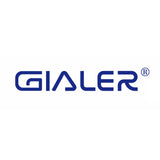RFID range is a critical factor to consider when installing an RFID system. It refers to the maximum distance that the RFID tag can be read by the RFID reader.
The range is affected by several factors, including the type, frequency, and environment in which it is used. This article will discuss the different RFID tags and their associated ranges.
What is RFID Read Range?
RFID tags use different frequencies to communicate with the reader. The most common RFID frequencies are low frequency (LF), high frequency (HF), and ultra-high frequency (UHF).
LF tags have a shorter range than HF and UHF tags. The range of an LF tag is typically between 3 cm and 10 cm. HF tags have a range of up to 1 m, while UHF tags have a range of up to 10 m.

The read range of an RFID tag determines how far away the tag can be from the reader and still be read.
Factors That Affect RFID Read Range:
Antenna Polarization
The polarization of the antenna also affects the read range. The most common types of polarization are linear and circular.
Linear polarization is when the antenna’s electric field is parallel to the ground. Circular polarization is when the electric field rotates around the axis of the antenna.
Linear polarization is more common than circular polarization. They also have a longer range than circular polarization. As such, you can use them in applications where the tag is far from the reader.
Antennae Gain
The most critical factor that affects the read range is the antennae gain. The reader’s antennae emit electromagnetic waves that are used to communicate with the tag.
The higher the gain, the more powerful the electromagnetic waves and the greater the read range.
Antennae gain is measured in decibels (dB). The higher the dB, the greater the antennae gain. The most common gains include 2dbi, 5.5dBi, 8dBi, 9dBi and 12dBi. If you want high gain, we recommend you use 9dBi or 12dBi.
However, a bigger gain is not always ideal. In some cases, you will only need a small gain to achieve the desired read range. For example, a tag always close to the reader does not need a high-gain antenna.
A small gain antenna is also smaller, which can be critical in some applications. It improves the flexibility and portability of the RFID system.
Tag Size, Angle, Placement, and Orientation
The size of the tag also affects the read range. A larger tag has a longer range than a smaller tag. This is because a big tag has a bigger antenna, which can emit and receive electromagnetic waves over a longer distance.
The angle at which the tag is placed also affects the read range. If the tag is placed at a 90-degree angle to the reader, it will have a shorter range than when it is placed at a 45-degree angle.
The placement of the tag also affects the read range. If the tag is placed close to metal objects, it will absorb the electromagnetic waves and reduce the read range. Water can also absorb electromagnetic waves and reduce the read range.
Finally, the orientation of the tag also affects the read range. If the tag is positioned in a way that the antenna is parallel to the ground, it will have a shorter range. We recommend that it remains perpendicular to the ground.
Reader Power Output Settings
The reader power output settings refer to the amount of power the reader emits to communicate with the tag. The higher the power output, the greater the read range.
Additionally, you should set your reader to high receive sensitivity. This increases the detection range of the reader.
You can find the power output settings in the RFID reader’s control panel. The most common power settings are 10 dBm, 15 dBm, 20 dBm, and 30 dBm. You should use 20 dBm or higher to get a decent read range.
The power will double every time you increase the dBM by a factor of 3. However, you should only use the highest power output setting if necessary. High power settings can cause interference with other electronic devices. They can also drain the battery life of the RFID tag faster.
Feeder Length
The feeder length is the distance between the RFID tag and the reader. The shorter the distance, the greater the read range.
If you want a long read range, we recommend using a short feeder length. You can achieve this by placing the RFID tag close to the reader.
Additionally, using adapters and multiplexer inserts lead to loss of power. As such, we recommend using them only when necessary.
Environmental Factors
Environmental factors can also affect the read range. For example, if the RFID tag is placed near a source of interference, such as a microwave oven, the read range will be reduced.
If the tag is placed in an environment with metal objects, the read range will be reduced.
On the other hand, an environment with a lot of water, such as a swimming pool, reduces the read range significantly.
Why You Should Optimize Your Read Range
Now that we’ve looked at the factors that affect RFID read range, let’s analyze why you should optimize your read range.
There are three main reasons why you should optimize your read range:
- Accurate Inventory Management. Long read range enables you to scan more items in a shorter amount of time. This increases the accuracy of your inventory management because you’re less likely to miss items.
- Cost Reduction. If you have a long read range, you can use fewer RFID readers. This reduces the cost of your RFID system because you don’t need to buy as many readers.
Besides, the long read range offers other benefits, such as the ability to track assets in real-time, increased security, and improved customer service.









